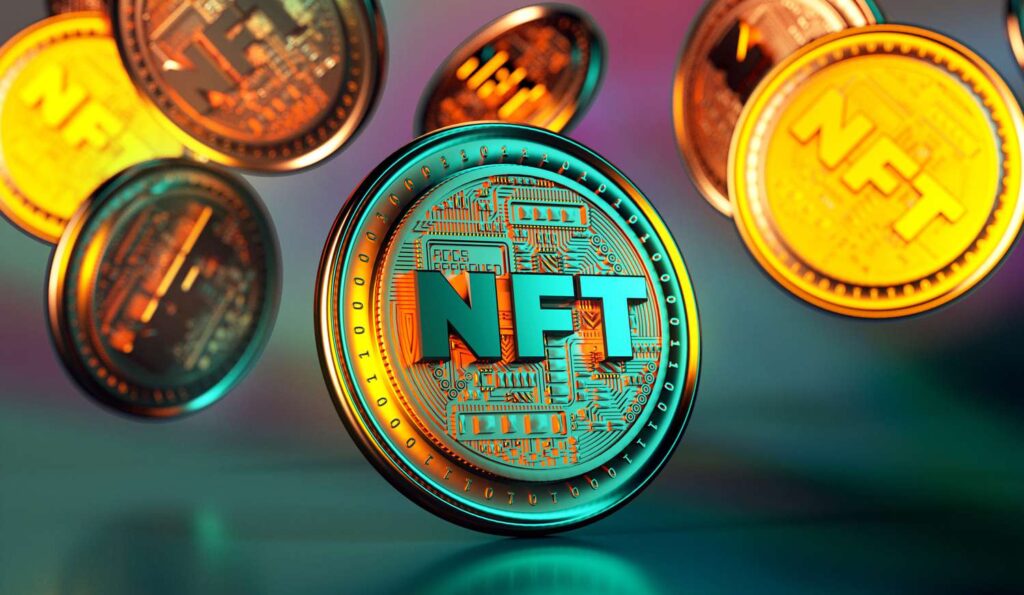NFTs (Non-Fungible Tokens): The Digital Revolution in Ownership and Creativity
Introduction
The digital age has ushered in a transformative concept that challenges the very nature of ownership and creativity. Non-fungible tokens (NFTs) have rapidly ascended to the forefront of the cultural zeitgeist, revolutionizing how we define, trade, and protect digital assets. This comprehensive article will take you on a journey into the world of NFTs, delving into their origins, technology, applications, impact on art, and entertainment, and the broader implications they have on the digital and creative economy.
I. Unraveling the Mystery of NFTs
Non-fungible tokens (NFTs) represent a digital evolution in ownership. Unlike cryptocurrencies like Bitcoin or Ethereum, which are fungible and interchangeable, NFTs are unique digital assets, each with an individual value and distinct characteristics. These tokens are indivisible, making them a one-of-a-kind, non-interchangeable digital representation of a specific item, whether it be art, collectibles, virtual real estate, or tweets.

II. The Ingenious Technology Behind NFTs
NFTs are rooted in blockchain technology, predominantly utilizing Ethereum’s ERC-721 or ERC-1155 standards. These tokens encompass several essential features:
- Uniqueness: Each NFT is inherently unique and carries an identifiable value, distinguishing it from all other tokens.
- Ownership and Provenance: NFTs serve as digital certificates of ownership, providing a transparent history of ownership changes stored on the blockchain.
- Interoperability: NFTs can seamlessly operate across various platforms and applications, enhancing flexibility and accessibility.
III. Diverse Applications of NFTs
The versatile nature of NFTs has led to their integration into various industries, each unlocking new possibilities for creative expression and ownership:
- Digital Art: NFTs have democratized the art world, providing artists with new opportunities to sell and monetize their digital creations. Platforms like OpenSea, Rarible, and SuperRare have become hubs for digital artists.
- Gaming and Virtual Real Estate: The gaming industry has embraced NFTs, enabling players to genuinely own in-game items, characters, and virtual land. Games like Axie Infinity and Decentraland showcase the potential of NFTs in gaming.
- Collectibles: NFTs have breathed new life into the world of collectibles, from trading cards and digital toys to rare sneakers and vintage comics.
- Music and Entertainment: Musicians, filmmakers, and celebrities have ventured into NFTs to release exclusive content and merchandise, revolutionizing how fans interact with their favorite artists.
- Authentication and Provenance: NFTs are increasingly employed to verify the authenticity and provenance of physical assets, such as luxury goods, vintage watches, and fine art.
IV. The Enchanting Benefits of NFTs
The rise of NFTs has bestowed a multitude of benefits upon creators, collectors, and the digital economy as a whole:
- Digital Ownership: NFTs introduce a novel way to establish ownership over digital assets, providing buyers with exclusive rights.
- Royalties and Resales: Creators can earn royalties every time their NFT changes hands, ensuring a sustainable income source and fair compensation for their work.
- Provenance and Authenticity: The transparent nature of the blockchain guarantees the easy verification of an NFT’s history and authenticity, offering trust and confidence to collectors.
- Interoperability: NFTs glide seamlessly across different platforms and applications, expanding their utility and accessibility.
- Global Accessibility: NFTs know no geographical boundaries, offering creators a global market to showcase their work and generating a broader reach.
V. Hurdles and Concerns on the NFT Horizon
Despite their numerous advantages, NFTs confront challenges and concerns:
- Environmental Impact: The environmental footprint of blockchain networks, notably Ethereum, has prompted concerns about their energy consumption. Ongoing efforts aim to address this issue through the transition to more energy-efficient blockchains.
- Copyright and Plagiarism: The NFT space has raised concerns regarding copyright infringement and plagiarism as creators navigate the nuances of this emerging field.
- Market Volatility: The NFT market has experienced considerable price fluctuations, with rapid price changes impacting investors and collectors alike.
- Scalability Challenges: High gas fees on popular NFT platforms have raised concerns about scalability, particularly on Ethereum.
VI. The Ever-Expanding Horizon of NFTs
The future of NFTs teems with possibilities, offering an exciting outlook for the digital economy:
- Sustainability: Solutions to mitigate the environmental impact of NFTs are emerging, including the transition to more energy-efficient blockchains and environmentally conscious NFT platforms.
- Integration with Real-World Assets: NFTs are set to play a significant role in the authentication and trading of real-world assets like real estate, luxury goods, and rare collectibles.
- Expanded Use Cases: As more industries grasp the potential of NFTs, the applications are poised to continue diversifying, transforming the digital landscape.
VII. Conclusion
Non-fungible tokens (NFTs) have erupted as a transformative force in the digital realm, challenging traditional perceptions of ownership, creativity, and digital assets. Their promise is not only evident in the art and entertainment industries but also extends to areas such as finance, real estate, and beyond. While the road ahead may be marked with challenges and uncertainties, NFTs remain an innovative and impactful force that is redefining the way we value and interact with digital and physical assets in the digital age.